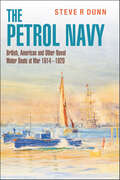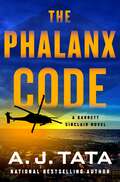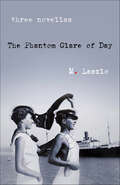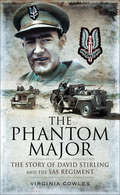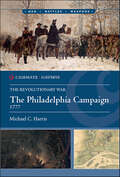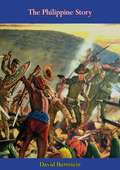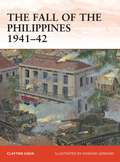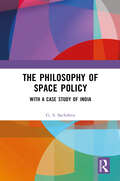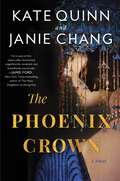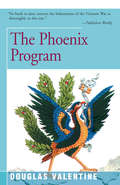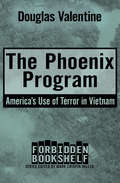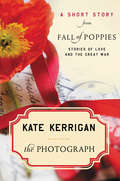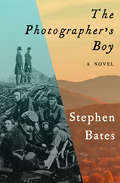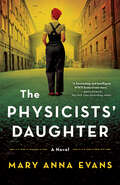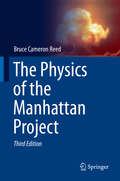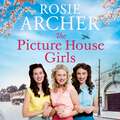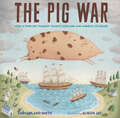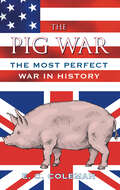- Table View
- List View
The Petlyakov Pe-2: Stalin's Successful Red Air Force Light Bomber
by Peter C. SmithThe definitive book on the development and deployment of the Soviet Union’s supreme dive-bomber—with rare archival and private photos.During the Second World War, the Petlyakov Pe-2 Peshka was the Soviet Union’s main dive- and light-bomber in operations across the Eastern Front. It became a mainstay of the Soviet counteroffensive that led to the fall of Berlin. They also led the way in the brief but annihilating Manchurian campaign against Japan in the closing days of the war in 1945.Conceived by a team of top aircraft designers whom Stalin had incarcerated on political charges, the Peshka had originally been designed as a high-altitude twin-engine fighter plane. But due to the outstanding success of the German Stukas in the Blitzkrieg, it was quickly transformed into the fastest dive-bomber in the skies.Only a handful had reached front lines by the start of Operation Barbarossa in June 1941. But by 1945, more than 11,000 of the type were built, including many variants. Many of these remained in service with the air forces of Yugoslavia and the Warsaw Pact countries into the 1950s. Using official sources, including the official Pe-2 handbook, as well as rare color and black-and-white photographs from both official and private collections, this is the definitive record of the Pe-2.
The Petrol Navy: British, American and Other Naval Motor Boats at War 1914–1920
by Steve DunnOn the outbreak of war in 1914, the Royal Navy found it required more small craft than it possessed to carry out minesweeping, anti-submarine patrols and coastal defense. This led to the formation of an auxiliary force of civilian vessels, including motor pleasure boats and yachts, relatively new types of craft powered by the internal combustion engine. The inclusion of these vessels came about when a group of motor boat owners suggested to the Admiralty that their vessels could play an important role in the defense of Britain. The result was the formation of the Royal Naval Motor Boat Reserve (RNMBR) in 1912. By mid-1915, the demands of naval duty had proved too much for these quirky craft. A meeting in the USA led to their replacement by American-designed Elco motor launches (MLs), of which 550 were purchased, and these Elco launches gave great service for the rest of the war, usually officered by RNVR personnel who won three Victoria Crosses. In addition to the Elcos, in 1915 some naval officers developed the hydroplaning coastal motor boats (CMBs), which served with equal distinction in the latter part of the war. Post-war, both types saw valuable service in the occupation of the Rhineland and in the Baltic campaign, where three more VCs were won. Other countries adopted similar craft. In Italy, the MAS torpedo motor craft achieved fame and success. And in France, MLs supplied by Britain, and by Elco, played their part. Germany too utilized small motor vessels, including the torpedo-armed Luftschiffmotorboote and Fernlenkboot remotely controlled designs. And when America entered the war, she built a fleet of so-called ‘sub chasers’, wooden-built and designed to counter U-boats along her East Coast. The Petrol Navy tells the stirring story of these motor-driven boats at war, of their development and operations and of the many colorful characters who were their captains and crew. It will acquaint historians and enthusiasts with an important and previously untold aspect of the naval war, and will engross those with a more general interest in the First World War.
The Phalanx Code: A Garrett Sinclair Novel (Garrett Sinclair #3)
by A. J. TataGarrett Sinclair escapes from prison to rescue his team from the manipulations of two tech moguls and learns of a devastating family secret in the process.Influential tech magnate Mitch Drewson calls on Sinclair and the Dagger team to protect his Project Optimus. An ambitious endeavor that empowers citizens to protect their financial and personal data in the face of increasingly authoritarian federal governments, Project Optimus is a threat to Aurelius Blanc’s Phalanx Corporation. Blanc’s data collection and media application are enabling a global security threat, creating a technofascism that monitors the activity of everyone with a smartphone, tablet, computer, or any web-connected device.When Phalanx assassin squads overrun an Optimus server farm in California and attack an Optimus coder named Blair Campbell, who happens to be the president’s daughter, Sinclair must deploy a group of warriors to save Blair and protect the remainder of the Optimus team so they can finish their important work—a project that includes deciphering the mysterious Phalanx Code, suspected to be Phalanx’s kill list of Optimus employees.With Phalanx squads hunting him and those he loves, Sinclair must determine who he can trust while a part of his past comes back to haunt him and threaten everything he holds dear. Nonstop action and authentic detail make this the most compelling, high-stakes entry in the Sinclair series yet.
The Phantom Glare of Day: Three Novellas
by M. LaszloIn this trio of novellas, three game young ladies enter into dangerous liaisons that test each one’s limits and force them to confront the most heartrending issues facing society in the early twentieth century. The Phantom Glare of Day tells of Sophie, a young lady who has lived a sheltered life and consequently has no idea how cruel public school bullying can be. When she meets Jarvis, a young man obsessed with avenging all those students who delight in his daily debasement, she resolves to intervene before tragedy unfolds. Mouvements Perpétuels tells of Cäcilia, a young lady shunned by her birth father. She longs for the approval of an older man, so when her ice-skating instructor attempts to take advantage of her, she cannot resist. Not a month later, she realizes that she is pregnant and must decide whether or not to get an abortion. Passion Bearer tells of Manon, a young lady who falls in love with a beautiful actress after taking a post as a script girl for a film company—and is subsequently confronted with the pettiest kinds of homophobia. Specific to their time yet unquestionably relevant for women today, The Phantom Glare of Day is a compelling interrogation of who gets to decide what is right and what is wrong.
The Phantom Major: The Story of David Stirling and the SAS Regiment
by Virginia CowlesAn action-packed biography of &“one of the legitimate storybook heroes of World War II&” and the special forces regiment he founded (The New York Times). In the dark and uncertain days of 1941 and 1942, when Rommel&’s Afrika Korps was sweeping toward Egypt and the Suez Canal, a small group of daring raiders made history for the Allies. They operated deep behind German lines, driving hundreds of miles through the deserts of North Africa. They hid by day and struck by night, destroying aircraft, blowing up ammunition dumps, derailing trains, and killing many times their own number. These men were the Special Air Service. The SAS was the brainchild of David Stirling, a deceptively mild-mannered man with a brilliant idea. Under his command, small teams of resourceful, highly trained men penetrated beyond the front lines of the opposing armies and wreaked havoc where the Germans least expected it. From Virginia Cowles, whose biographies have been praised as &“splendidly readable&” (Sunday Times) and &“fascinating&” (Kirkus Reviews), this is a classic account of these raids, an amazing tale of courage, impudence, and daring packed with action and high adventure. Her narrative, based on the eyewitness testimony of the men who took part, gives a compelling insight into the early years of the SAS.
The Phantom Patrol (A Billy Boyle WWII Mystery #19)
by James R. BennAn investigation into a gang of Nazi-affiliated art thieves Leads Billy Boyle directly into the line of fire at the catastrophic Battle of the Bulge.Winter 1944: Months after the Liberation of France, ex-Boston cop Billy Boyle finds himself in Paris. It is a city reeling from the carnage it has endured, but many are hopeful an end to war is in sight. When Billy finds a rare piece of artwork after a tense shoot-out in the Père Lachaise Cemetery, he thinks it could be connected to the Syndicat du Renard, a shadowy network of Nazi sympathizers known to be smuggling stolen artwork out of France.Trailing the Syndicat, Billy discovers that someone with a high level of communications clearance—someone in the Phantom regiment of the British Army—may be using his position to aid the thieves. Billy, determined to stop the abettor, heads up to the frontlines where he experiences a last-ditch battle against overwhelming odds. There, the ruinous Battle of the Bulge unfurls in the Ardennes Forest. Can Billy and his team survive the bracing onslaught and return the stolen artwork to its rightful protectors?
The Philadelphia Campaign, 1777 (Casemate Illustrated)
by Michael C. HarrisDetailed and fully illustrated account of the Philadelphia campaign 1777, with over 150 photographs, maps and contemporary artwork. The British Army in North America conducted two campaigns in 1777. John Burgoyne led one army south from Canada to seize control of the Lake Champlain-Hudson River corridor resulting in the battle of Saratoga. Burgoyne’s defeat led to that army’s capture. Rather than assist Burgoyne’s campaign, William Howe led his army from New York City on the Philadelphia campaign. Although Howe captured Philadelphia, the events of 1777 led to the French Alliance and ultimately American victory in American Revolution. This fully illustrated account of the Philadelphia campaign puts the battles into context and explains the importance of the campaign to the outcome of the war.
The Philippine Story
by David BernsteinPublished a year after the Philippines proclaimed independence in July 1946, the chief permanent value of this book lies in its survey of the history of the American experiment in the Philippines. The Philippine Story is a concise, inclusive analysis of the background, failure, achievements and implications of the American experiment in the Philippines, from Magellan to the present post-war era. The author, David Bernstein, sketches in an overall impression: geography, education, religion, anthropology, national characteristics, and so on. He then goes on to consider each major phase of island history, the acquiescent period of Spanish rule, the era of revolt with Rizal as its inspiration and later national hero, the transition to American rule and the rapid progress in education and social and economic justice under successive Governors-General. The final section deals with the war years and the new republic.An invaluable read that challenges America’s policies.
The Philippines 1941-42
by Howard Gerrard Clayton ChunThe Philippine Islands were one of two major US bases in the Pacific, the other being Pearl Harbor. The Japanese considered the capture of the Philippines crucial for its efforts to control resource-laden Southeast Asia. As opposed to its attack on Pearl Harbor, the Japanese intention was to invade and occupy the Philippines in a campaign that was to last five months. The flamboyant Douglas MacArthur, a hero of World War I and former Chief of Staff led the defense of the Philippines when the Japanese attacked on 8 December 1941. Despite warnings about the Pearl Harbor attack, the Japanese air forces caught MacArthur's aircraft on the ground resulting in half of his modern bomber and fighter aircraft destroyed. Army Air Forces B-17s attempted to bomb Formosa, but Japanese fighters eliminated them and a Japanese full-scale invasion followed days later.Japanese forces landed in northern Luzon from Formosa. B-17s and naval attacks tried in vain to stop the invasion, but failed. Poorly trained and equipped Philippine Army units could not halt the Japanese and the American and Filipino forces withdrew, even though they outnumbered the initial Japanese forces. Japanese Army units broke through several defensive lines as they drove on to Manila, which was abandoned by the Americans as Macarthur withdrew to Bataan. The Japanese gradually reduced this pocket until the only American position was Corregidor Island. MacArthur left for Australia, as a direct order from President Franklin Roosevelt and was awarded the Medal of Honor, one of the more controversial aspects of the campaign. With little hope of survival, Corregidor fell, with organized resistance ending on 9 May 1942.Although a defeat, the American and Filipino defensive efforts upset the Japanese plan for a swift victory and provided time for Australia and the United States to build up their defenses. It also gave hope to the American public that Americans could stand up to Japan, with the "Battling Bastards of Bataan" providing a source of inspiration. Unfortunately, for the survivors of the campaign, it meant a grueling three years of captivity for some. The Bataan Death March was one of the most infamous events in World War II, with Japanese forces responsible for the deaths of about 600 Americans and between 5,000-10,000 Filipino soldiers dying in the march, some summarily executed by beheading.
The Philosophy of Space Policy: With a Case Study of India
by G. S. SachdevaSpace activities by governmental agencies require considerable state funding and bear long gestation periods with uncertainty in results. This necessitates the development of a directional policy defining long-term goals, embodying national aspirations, and envisaging techno-possibilities for manufacturing and operations. This book offers hints for such policy-making and also explores other alternatives to enable clarity for internal constituency and international posturingThe first section of this work discusses philosophical perspectives, namely – theoretical, theological, ethical and auditorial. The second section offers options and initiatives as alternatives or adjuncts to space policy. The subject matter in this book also includes a case study of India. It narrates a brief history of national space activities and the journey of Indian Space Research Organisation (ISRO), besides providing a futuristic vision for India and its global stance.Print edition not for sale in South Asia (India, Sri Lanka, Nepal, Bangladesh, Pakistan and Bhutan)
The Phoenix Crown: A Novel
by Janie Chang Kate QuinnFrom bestselling authors Janie Chang and Kate Quinn, a thrilling and unforgettable narrative about the intertwined lives of two wronged women, spanning from the chaos of the San Francisco earthquake to the glittering palaces of Versailles.San Francisco, 1906. In a city bustling with newly minted millionaires and scheming upstarts, two very different women hope to change their fortunes: Gemma, a golden-haired, silver-voiced soprano whose career desperately needs rekindling, and Suling, a petite and resolute Chinatown embroideress who is determined to escape an arranged marriage. Their paths cross when they are drawn into the orbit of Henry Thornton, a charming railroad magnate whose extraordinary collection of Chinese antiques includes the fabled Phoenix Crown, a legendary relic of Beijing’s fallen Summer Palace.His patronage offers Gemma and Suling the chance of a lifetime, but their lives are thrown into turmoil when a devastating earthquake rips San Francisco apart and Thornton disappears, leaving behind a mystery reaching further than anyone could have imagined . . . until the Phoenix Crown reappears five years later at a sumptuous Paris costume ball, drawing Gemma and Suling together in one last desperate quest for justice.
The Phoenix Program
by Douglas Valentine"An important work." --John Prados, author of President's Secret Wars "This definitive account of the Phoenix program, the US attempt to destroy the Viet Cong through torture and summary execution, remains sobering reading for all those trying to understand the Vietnam War and the moral ambiguities of America's Cold War victory. Though carefully documented, the book is written in an accessible style that makes it ideal for readers at all levels, from undergraduates to professional historians." --Alfred W. McCoy, author of The Politics of Heroin: CIA Complicity in the Global Drug Trade
The Phoenix Program: America's Use of Terror in Vietnam (Forbidden Bookshelf #3)
by Douglas Valentine&“This shocking expose of the CIA operation aimed at destroying the Vietcong infrastructure thoroughly conveys the hideousness of the Vietnam War&” (Publishers Weekly). In the darkest days of the Vietnam War, America&’s Central Intelligence Agency secretly initiated a sweeping program of kidnap, torture, and assassination devised to destabilize the infrastructure of the National Liberation Front (NLF) of South Vietnam, commonly known as the &“Viet Cong.&” The victims of the Phoenix Program were Vietnamese civilians, male and female, suspected of harboring information about the enemy—though many on the blacklist were targeted by corrupt South Vietnamese security personnel looking to extort money or remove a rival. Between 1965 and 1972, more than eighty thousand noncombatants were &“neutralized,&” as men and women alike were subjected to extended imprisonment without trial, horrific torture, brutal rape, and in many cases execution, all under the watchful eyes of US government agencies. Based on extensive research and in-depth interviews with former participants and observers, Douglas Valentine&’s startling exposé blows the lid off of what was possibly the bloodiest and most inhumane covert operation in the CIA&’s history. The ebook edition includes &“The Phoenix Has Landed,&” a new introduction that addresses the &“Phoenix-style network&” that constitutes America&’s internal security apparatus today. Residents on American soil are routinely targeted under the guise of protecting us from terrorism—which is why, more than ever, people need to understand what Phoenix is all about.
The Phony Marine
by Jim LehrerVeteran newsman and acclaimed novelist Jim Lehrer exposes worlds both intimate and universal, builds suspense with an accomplished hand, and reveals a savvy understanding of the modern social landscape. With The Phony Marine, Lehrer dives into a highly controversial topic-and delivers his most compelling character portrait to date.Hugo Marder is about as unremarkable as they come. On the floor of the Washington, D.C., branch of Nash Brothers, one of the country's most respected men's stores, Hugo is a wise, reserved salesman. At home, he is a solitary, divorced fifty-year-old with few friends and an eBay addiction. But he has always wanted to make more of his life, dreaming of becoming an artist or a cartoonist. When he was younger, he'd always wanted to be a marine.Late one night, Hugo stumbles upon an online auction for a Silver Star, the medal awarded for bravery in battle. He bids and wins. But it is only after he places the lapel pin on his jacket that he realizes the enormity of his actions. Suddenly, ordinary people begin to treat him differently, with dignity and respect. Is he really going to pretend the honor is his own?As Hugo wrestles with his conscience, a transformation begins to take place. He studies the life of a marine, learns the military terminology, body-builds at the gym, even gets a crew cut. When he is reborn as a former marine, his life immediately changes. Is it possible that his deception has unlocked the man he always wanted to be? Through numerous challenges and more than one terrifying ordeal, Hugo Marder must prove his worth. And in the end, he must ask himself: What is a hero?Alive with detail, emotional depth, and unexpected twists of plot, The Phony Marine is a tense, revelatory work of fiction that will cause every reader to consider his or her own stance on what truly makes someone great.From the Hardcover edition.
The Photograph: Stories of Love and the Great War
by Kate KerriganNew York Times bestselling author Kate Kerrigan brings Dublin's past vividly alive in her heart-wrenching short story about the forbidden passion between a soldier and a rebel, and the woman years later who discovers their secret.When British soldier Clive Postlethwaite wandered into Dublin's National Gallery, falling in love with a fiery Irish girl was the last thing on his mind. As soon as he meets Eileen O'Hara, he's instantly enthralled with her humor and beauty. But the Irish Republicans are rebelling against Home Rule every day, and Clive and Eileen may be forced to choose sides, forever.Originally published in the moving collection Fall of Poppies: Stories of Love and the Great War, this e-book also includes an excerpt from Kerrigan's novel Ellis Island, available now.
The Photographer's Boy: A Novel
by Stephen BatesA set of antique photographic plates is the key to uncovering hidden truths of the Civil War, Great Depression, and 9/11 eras in this &“unflinching&” novel (Publishers Weekly). A teenage boy and his grandfather travel across America to attend that last great reunion of Civil War veterans at Gettysburg in 1938, where secrets and lies are revealed about the old man&’s past. Perhaps he was not the hero his grandson thought, but he still has a valuable treasure to reveal, which will shed intriguing light on the war and his part in it. Interweaving three periods of crisis in American history—the Civil War, the Depression, and 9/11—The Photographer&’s Boy explores the power of photography and journalism to inform or mislead; raises questions about love; and offers &“an unflinching but sympathetic, often touching, look at the comforting fictions people wrap themselves in to protect themselves from the cold of reality&” (Publishers Weekly).
The Physicists' Daughter: A Novel
by Mary Anna EvansPerfect for fans of The Alice Network and Kate Quinn, The Physicists' Daughter is "a fascinating and intelligent WWII home front story." —Rhys Bowen, New York Times bestselling author of The Venice Sketchbook.No one can be trusted. The fate of a country is at stake. And everything depends on the physicists' daughter.New Orleans, 1944.Sabotage. That's the word on factory worker Justine Byrne's mind as she is repeatedly called to weld machine parts that keep failing with no clear cause. Could someone inside the secretive Carbon Division be deliberately undermining the factory's Allied war efforts?Raised by her late parents to think logically, she also can't help wondering just what the oddly shaped carbon gadgets she assembles day after day have to do with the boats the factory builds. When a crane inexplicably crashes to the factory floor, leaving a woman dead, Justine can no longer ignore her nagging fear that German spies are at work within the building, trying to put the factory and its workers out of commission.Unable to trust anyone—not the charming men vying for her attention, not her unpleasant boss, and not even the women who work beside her—Justine draws on the legacy of her unconventional upbringing to keep her division running and protect her coworkers, her country, and herself from a war that is suddenly very close to home.
The Physics of the Manhattan Project
by Bruce Cameron ReedThe development of nuclear weapons during the Manhattan Project is one of the most significant scientific events of the twentieth century. This revised and updated 3rd edition explores the challenges that faced the scientists and engineers of the Manhattan Project. It gives a clear introduction to fission weapons at the level of an upper-year undergraduate physics student by examining the details of nuclear reactions, their energy release, analytic and numerical models of the fission process, how critical masses can be estimated, how fissile materials are produced, and what factors complicate bomb design. An extensive list of references and a number of exercises for self-study are included. Links are given to several freely-available spread sheets which users can use to run many of the calculations for themselves.
The Physics of the Manhattan Project: How Nuclear Physics Became A Global Geopolitical Game-changer (Undergraduate Lecture Notes In Physics Ser.)
by Bruce Cameron ReedThe development of nuclear weapons during the Manhattan Project is one of the most significant scientific events of the twentieth century. This revised and updated 4th edition explores the challenges that faced the scientists and engineers of the Manhattan Project. It gives a clear introduction to fission weapons at the level of an upper-year undergraduate physics student by examining the details of nuclear reactions, their energy release, analytic and numerical models of the fission process, how critical masses can be estimated, how fissile materials are produced, and what factors complicate bomb design. An extensive list of references and a number of exercises for self-study are included. Revisions to this fourth edition include many upgrades and new sections. Improvements are made to, among other things, the analysis of the physics of the fission barrier, the time-dependent simulation of the explosion of a nuclear weapon, and the discussion of tamped bomb cores. New sections cover, for example, composite bomb cores, approximate methods for various of the calculations presented, and the physics of the polonium-beryllium "neutron initiators" used to trigger the bombs.The author delivers in this book an unparalleled, clear and comprehensive treatment of the physics behind the Manhattan project.
The Piano Teacher
by Janice Y. K. LeeIn the sweeping tradition of The English Patient, a gripping tale of love and betrayal set in war-torn Hong Kong In 1942, Will Truesdale, an Englishman newly arrived in Hong Kong, falls headlong into a passionate relationship with Trudy Liang, a beautiful Eurasian socialite. But their love affair is soon threatened by the invasion of the Japanese as World War II overwhelms their part of the world. Will is sent to an internment camp, where he and other foreigners struggle daily for survival. Meanwhile, Trudy remains outside, forced to form dangerous alliances with the Japanese-in particular, the malevolent head of the gendarmerie, whose desperate attempts to locate a priceless collection of Chinese art lead to a chain of terrible betrayals. Ten years later, Claire Pendleton comes to Hong Kong and is hired by the wealthy Chen family as their daughter's piano teacher. A provincial English newlywed, Claire is seduced by the heady social life of the expatriate community. At one of its elegant cocktail parties, she meets Will, to whom she is instantly attracted-but as their affair intensifies, Claire discovers that Will's enigmatic persona hides a devastating past. As she begins to understand the true nature of the world she has entered, and long-buried secrets start to emerge, Claire learns that sometimes the price of survival is love.
The Picture House Girls: A heartwarming wartime saga brimming with warmth and nostalgia
by Rosie ArcherA warm and heartfelt WW2 saga of hope, love, and female friendship and how women pull together through good times and bad. Perfect for fans of Dilly Court and Nadine Dorries.In 1940s Hampshire the war is settling into its stride bringing dark days for many. Connie Baxter has just moved in with her Aunt Gertie after the death of her mother. Gertie works as a cleaner at the Criterion Picture House in Gosport and she helps Connie to get a job there as an usherette. For Connie, it's the perfect place to work because she adores the movies with their glamorous, romantic stars. The only fly in the ointment is the Criterion's creepy manager with his wandering hands. But soon Connie is firm friends with Queenie, who sells ice creams and soon tells her how to warn him off. Charming Tommo Smith is a 'taxi-dancer'. For a fee he steers ladies of a certain age around the dance floor - and sometimes more besides which pays for his smart clothes. Connie's friend Queenie says he's a chancer, but his gorgeous blue eyes tell Connie something different. When suddenly he disappears, Connie accepts that Queenie may be right - he was too good to be true. As the war rages on and Connie struggles with the harsh realities of life and the turbulence of romance, she comes to realize that life isn't always like it is in the pictures.
The Pieces of Us
by Caroline Montague'Tender and moving' Jane Bailey'A beautiful portrait of love and loss, and of hope in adversity' Sarah SteeleMarina and Hugh were once madly in love. But after the loss of their beautiful little daughter, grief has created a distance between them that feels impossible to bridge. Marina knows leaving Italy is the only way they will be able to move on, but Thorncliffe Hall, Hugh's family home in England, is so grey and unwelcoming.Just when life feels like it may never regain colour, Marina and Hugh come across a striking china coffee pot in a London shop window, adorned with a fox flying through the night sky. The coffee pot comes attached with a mystery, one that is connected with Hugh's own family many years ago.By digging into the past, Marina is about to discover a story far beyond her wildest dreams. But will the past help her heal the present?A heartwrenching, utterly unforgettable story for fans of Sally Page and Amanda Prowse.***Praise for Caroline Montague's spellbinding stories'All all the ingredients for a Sunday night TV drama' Prue Leith 'Enthralling... snared us in an ever-tightening circle of love and despair, secrets and forgiveness' Joanna Lumley'Thoroughly engrossing' Julian Fellowes, creator of Downton Abbey'Enthralling and wonderfully romantic, with gorgeous characters, this is perfect to curl up with and get lost in' Katie Fforde 'A moving, sweeping saga of love and loss' Dinah Jefferies
The Pieces of Us
by Caroline Montague'A moving and enchanting story with an uplifting message of hope at its heart... Be warned - you will need tissues. Caroline's best book yet!' Dinah Jefferies'Warm, moving, romantic' Prue Leith'Tender and moving' Jane Bailey'A beautiful portrait of love and loss, and of hope in adversity' Sarah SteeleMarina and Hugh were once madly in love. But after the loss of their beautiful little daughter, grief has created a distance between them that feels impossible to bridge. Marina knows leaving Italy is the only way they will be able to move on, but Thorncliffe Hall, Hugh's family home in England, is so grey and unwelcoming.Just when life feels like it may never regain colour, Marina and Hugh come across a striking china coffee pot in a London shop window, adorned with a fox flying through the night sky. The coffee pot comes attached with a mystery, one that is connected with Hugh's own family many years ago.By digging into the past, Marina is about to discover a story far beyond her wildest dreams. But will the past help her heal the present?A heartwrenching, utterly unforgettable story for fans of Sally Page and Amanda Prowse.***Praise for Caroline Montague's spellbinding stories'All all the ingredients for a Sunday night TV drama' Prue Leith 'Enthralling... snared us in an ever-tightening circle of love and despair, secrets and forgiveness' Joanna Lumley'Thoroughly engrossing' Julian Fellowes, creator of Downton Abbey'Enthralling and wonderfully romantic, with gorgeous characters, this is perfect to curl up with and get lost in' Katie Fforde 'A moving, sweeping saga of love and loss' Dinah Jefferies
The Pig War: How a Porcine Tragedy Taught England and America to Share
by Emma Bland SmithHere is a true story of how the great nations of America and England almost went to war in 1859 over a pig--but learned to share instead.In 1859, the British and Americans coexist on the small island of San Juan, located off the coast of the Pacific Northwest. They are on fairly good terms--until one fateful morning when an innocent hog owned by a British man has the misfortune to eat some potatoes on an American farmer's land. In a moment of rash anger, Lyman Cutlar shoots Charles Griffin's pig, inadvertently almost bringing the two nations to war. Tensions flare, armies gather, cannons are rolled out . . . all because of a pig! Emma Bland Smith's humorous text and Alison Jay's folksy illustrations combine in this whimsical nonfiction picture book that models the principles of peaceful conflict resolution.
The Pig War: The Most Perfect War in History
by E C ColemanWith a plot to grace any comic opera, the 1859-72 'Pig War' broke out when an American living on a quietly disputed small island in the Gulf of Georgia shot a British pig he found rooting up his garden produce. The authorities on nearby Vancouver Island and the military leadership of the adjacent Washington Territory both felt they had good reasons to escalate a trivial incident into a full-blown war between the United States and Great Britain. Soon, American soldiers found themselves looking down the barrels of the Royal Navy cannon.Whilst both the British and the Americans continued to threaten and bluster, Royal Marines and US soldiers settled down on the island to a round of social events, including sports days, combined dinners and even summer balls. Despite the outbreak of the American Civil War, and British intervention on the Confederate side, the hot-heads were restrained and, eventually, it was decided that the problem should become one of the earliest examples of international arbitration. The German Kaiser was brought in and - from the British point of view - came to the wrong decision.Set against the framework of US attempts to gain control of the whole North American continent, The Pig War is a highly readable account of a little-known episode in Anglo-American history.

